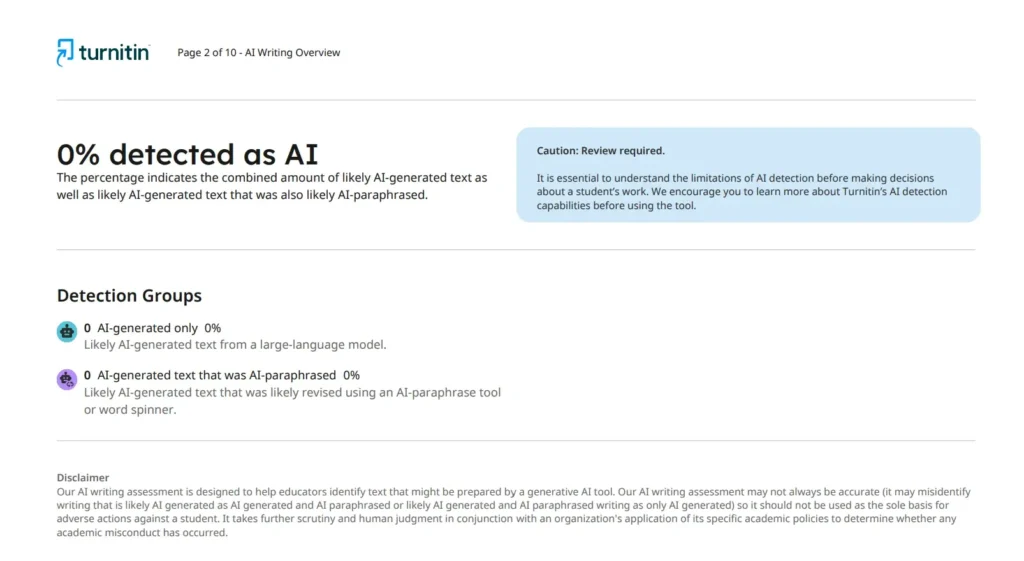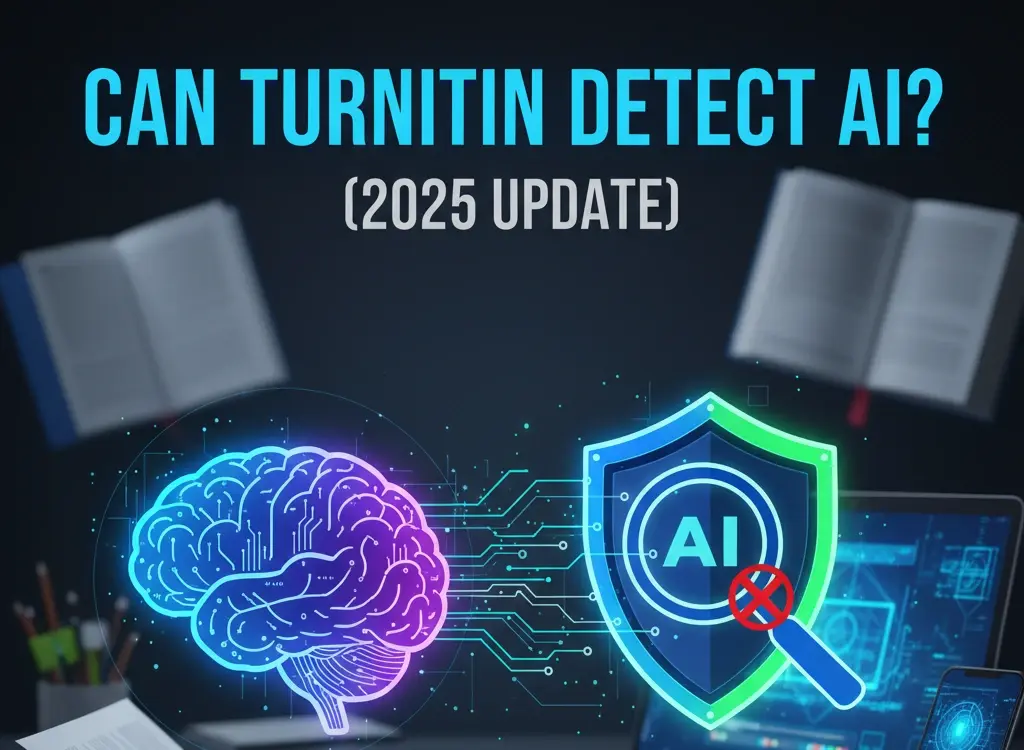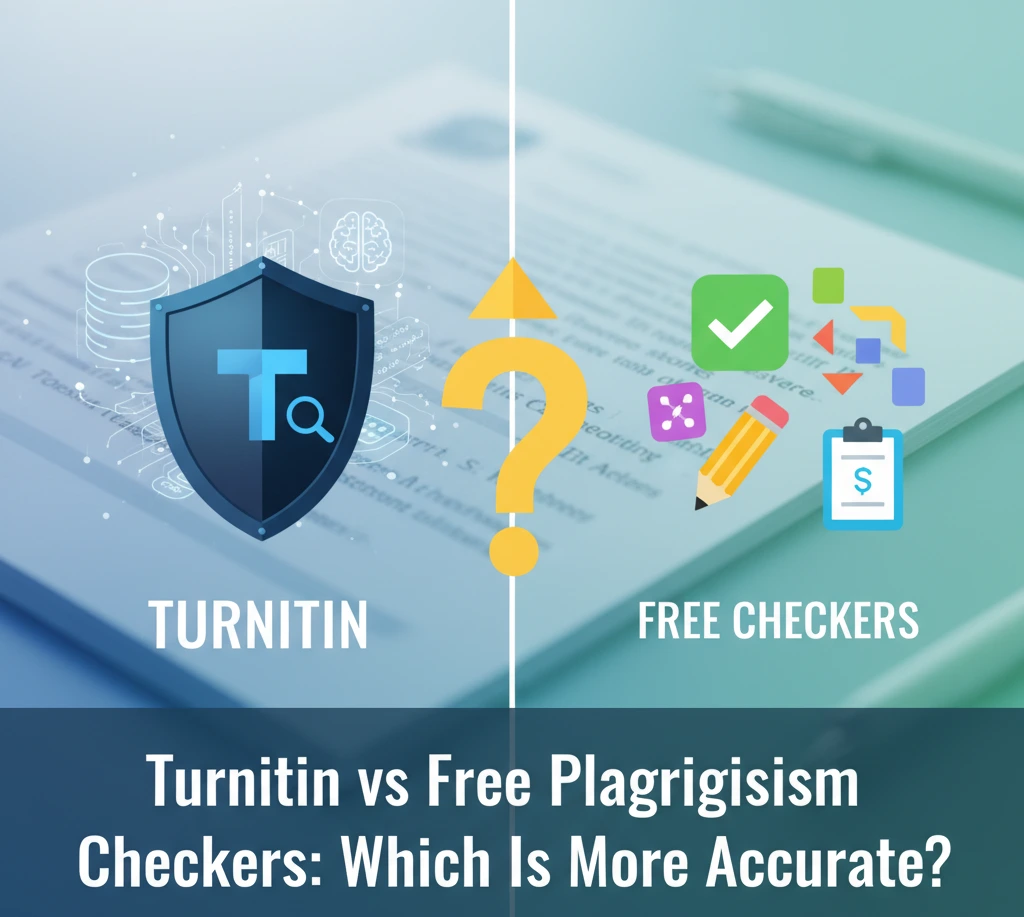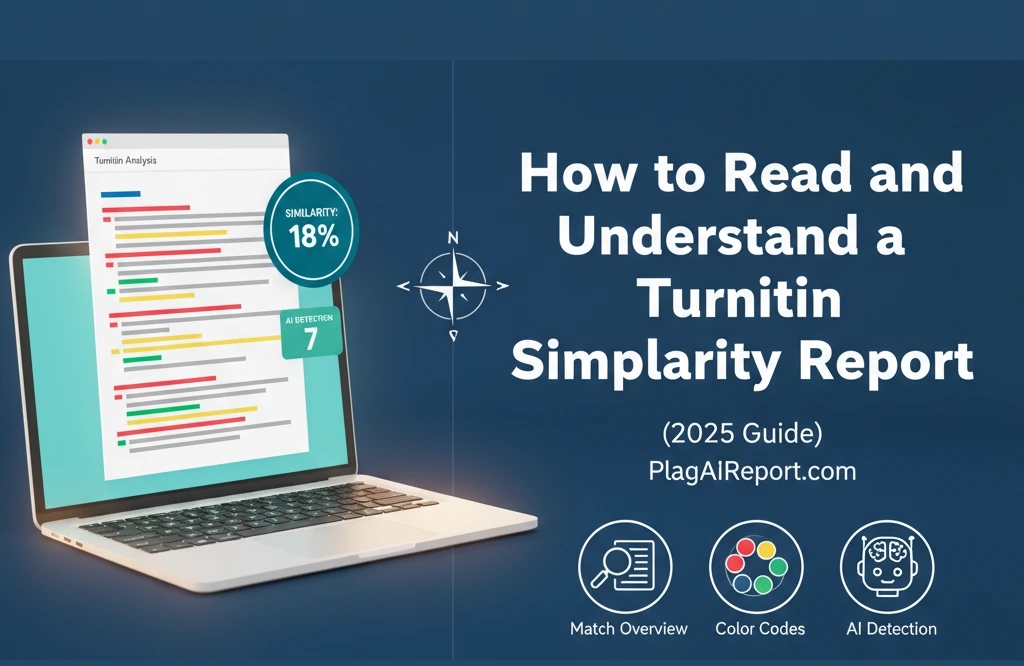Introduction: Why AI-Generated Writing Detection Has Become a Top Concern in 2025
The academic landscape is constantly evolving, and perhaps no technological advancement has stirred as much conversation and concern in recent years as Artificial Intelligence (AI) in writing. From crafting eloquent essays to generating complex research summaries, AI writing tools have become incredibly sophisticated and accessible. While they offer undeniable benefits for brainstorming and improving efficiency, their pervasive use has ignited a critical debate: Can Turnitin detect AI-generated content? This question is at the forefront of students’, educators’, and researchers’ minds in 2025, transforming AI detection into a paramount concern.
In an era where AI can produce text almost indistinguishable from human writing, the integrity of academic work hinges on reliable detection methods. Institutions worldwide rely on tools like Turnitin to uphold academic honesty and ensure originality. But as AI models become more advanced, so too must the detection systems designed to identify their output. This article will dive deep into Turnitin’s capabilities in 2025, exploring how its AI detection system works, its accuracy, and what you need to know to navigate this new academic frontier. We’ll also reveal how PlagAiReport.com stands as your trusted partner, offering accessible, affordable, and authentic Turnitin reports, including critical AI detection, without the need for an institutional login.
How Turnitin’s AI Detection System Works
Understanding whether Turnitin can detect AI-generated content in 2025 requires a look under the hood at its sophisticated detection mechanisms. Turnitin doesn’t just scan for copied phrases; its AI detection system employs a multi-faceted approach, analyzing nuanced linguistic patterns that are characteristic of machine-generated text.
Linguistic Pattern Analysis
At its core, Turnitin’s AI detection system utilizes advanced linguistic pattern analysis. This goes beyond simple keyword matching. AI writing models, despite their impressive fluency, often exhibit subtle statistical regularities in their word choices, sentence structures, and rhetorical devices. Turnitin’s algorithms are trained on vast datasets of both human-written and AI-generated content to identify these tell-tale patterns.
For instance, AI-generated text might display:
- Predictable word sequences: A tendency to use common phrases or transitions more frequently than a human writer.
- Lack of unique voice or style: While mimicking various styles, AI often struggles to maintain a truly distinct or idiosyncratic voice, which is a hallmark of human writing.
- Sentence structure uniformity: Less variation in sentence length and complexity compared to diverse human writing.
Syntax Scanning and Model-Based Identification
Beyond individual word choices, Turnitin’s system performs deep syntax scanning. This involves analyzing the grammatical structure of sentences and paragraphs. AI models, particularly earlier versions, sometimes exhibit particular syntactic fingerprints—ways they construct sentences that deviate subtly from natural human language.
Furthermore, Turnitin’s detection isn’t just looking for “AI-ness” in a general sense; it’s increasingly employing model-based identification. This means their system is constantly updated with insights into the outputs of popular large language models (LLMs) like those powering ChatGPT, GPT-5, and others. By understanding how these specific models generate text, Turnitin can fine-tune its detection algorithms to recognize their unique outputs more effectively.
This sophisticated combination allows Turnitin to generate an AI writing indicator that flags sections of a document that are likely to have been produced by AI. It’s a dynamic system, continuously learning and adapting as AI writing technology evolves.
Turnitin’s 2025 AI Detection Updates
The journey of AI detection within Turnitin has been swift and significant. While initial discussions around can Turnitin detect ChatGPT began in earnest in late 2022 and early 2023, 2025 marks a pivotal year for its integrated capabilities.
Since its initial rollout of the AI writing indicator in early 2023, Turnitin has made substantial improvements. The system has undergone continuous refinement, incorporating feedback from millions of submissions and adapting to the rapid advancements in AI models. These updates have focused on:
- Enhanced Accuracy: Refining algorithms to reduce false positives and negatives, making the Turnitin AI detection more reliable.
- Broader Coverage: Expanding its ability to detect content from an even wider array of AI writing tools, not just a select few.
- Seamless Integration: The AI writing detection feature is now deeply integrated into the core Turnitin platform used by most educational institutions globally. When an instructor uses Turnitin for a similarity report, the AI writing indicator is often automatically generated alongside it, providing a comprehensive overview of a submission’s originality.
This means that in 2025, for most universities and colleges worldwide, using Turnitin for submissions automatically includes an analysis for AI-generated text. This integration underscores the institutional commitment to addressing the challenges posed by AI in academic writing. For students and researchers, this means that understanding AI content detection 2025 is no longer optional but essential.
How Accurate Is Turnitin at Detecting AI Content?
The burning question for many is: How accurate is Turnitin’s AI detection score? This is a complex area, as no detection system is 100% foolproof, but Turnitin has made significant strides in reliability.
Discussing Reliability, False Positives/Negatives
Turnitin officially states that their AI writing indicator has a high degree of accuracy. They report a false positive rate of less than 1% for documents with 20% or more AI-generated text. A false positive occurs when human-written text is incorrectly flagged as AI-generated. While this rate is commendably low, it’s crucial to understand that it’s not zero. This means that, on rare occasions, entirely human-written content could be flagged.
Conversely, false negatives occur when AI-generated text is not detected. As AI models evolve and users develop techniques to “humanize” AI output, the challenge of false negatives remains. Turnitin continuously updates its algorithms to combat these evasive tactics.
It’s important to view the AI writing indicator as precisely that: an indicator. It provides a percentage score representing the amount of text in a submission that Turnitin’s model identifies as having been generated by AI. It is designed to be a tool for educators to initiate conversations with students, rather than a definitive judgment on academic integrity.
What Turnitin Officially Says
Turnitin emphasizes transparency and education regarding its AI detection capabilities. Their official communications highlight several key points:

- It’s a Tool, Not a Verdict: The AI writing indicator is intended to support an instructor’s judgment, not replace it. It provides data points that can inform further investigation and discussion.
- Focus on Patterns: The system identifies linguistic patterns characteristic of AI writing, not plagiarism in the traditional sense. It does not determine intent.
- Continuous Improvement: Turnitin acknowledges that AI technology is rapidly advancing and commits to continuously updating and improving its detection capabilities. They actively research and adapt to new AI models and writing styles.
- Minimum Word Count: Turnitin recommends that the AI writing indicator only be considered for submissions with at least 300 words of prose. Shorter texts may not provide enough data for reliable analysis.
For the most up-to-date information, always refer to Turnitin’s official blog and help pages, such as Turnitin’s AI writing and integrity resources.
Comparison with Other AI Detection Tools
With the surge in AI writing tools, there’s also been a proliferation of AI detection tools, both free and paid, from various third-party providers. While many promise robust detection, it’s crucial to understand why most of these are less accurate than Turnitin.
Why Third-Party/Free Tools Are Less Accurate
The primary reason why independent or free AI checkers often fall short is their lack of access to the vast datasets and sophisticated, continuously updated algorithms that Turnitin employs.
Here are some key distinctions:
- Limited Training Data: Many free tools are trained on smaller, more generic datasets, making them less adept at identifying the subtle nuances of academic AI writing. Turnitin benefits from analyzing millions of student submissions annually, providing an unparalleled dataset for refining its models.
- Outdated Algorithms: The landscape of AI is changing almost daily. A free tool that was effective a few months ago might be easily bypassed by newer AI models today. Turnitin dedicates significant resources to research and development, ensuring its algorithms are cutting-edge and constantly updated to keep pace with the latest LLMs.
- Superficial Analysis: Some tools might rely on more superficial markers, like perplexity and burstiness scores. While these can offer clues, they are often easily manipulated and can lead to high rates of both false positives and false negatives.
- Lack of Institutional Integration: Unlike Turnitin, which is deeply integrated into academic workflows and designed specifically for educational content, most third-party tools are general-purpose. This means they might not be optimized for the specific context of academic integrity.
Relying on less accurate tools can give a false sense of security or, worse, lead to unwarranted accusations. For example, some tools have been shown to have unacceptably high false positive rates, incorrectly flagging human writing as AI. Others might fail to detect sophisticated AI text, leading to false negatives.
Therefore, when considering AI plagiarism detection, the reliability and established reputation of a tool like Turnitin remain paramount. It’s designed to provide a comprehensive and nuanced analysis, offering more dependable results than the myriad of free online checkers available.
Common Misconceptions About Turnitin’s AI Detection
The rise of Turnitin AI detection has naturally led to several misconceptions. Addressing these is vital for a clear understanding of what the tool does and doesn’t do.
Turnitin Doesn’t “Read Your Mind” — It Analyzes Patterns, Not Ideas
One common fear among students is that Turnitin can somehow discern their thought processes or penalize them for using AI for legitimate brainstorming. This is far from the truth.
- Pattern Recognition, Not Mind Reading: Turnitin’s AI writing indicator does not evaluate the originality of ideas or the effort put into a paper. Instead, it analyzes the text itself for statistical linguistic patterns that align with known characteristics of AI-generated content. It looks for how words are strung together, grammatical structures, and stylistic consistency, not the genesis of your brilliant thesis statement.
- Focus on the Output: The detection system is concerned with the final written output, specifically whether segments of it show the statistical fingerprints of AI models. It cannot tell if you used ChatGPT to outline your essay or to generate a few sentences that you then heavily edited and integrated. The more you transform and personalize AI-generated text, the less likely it is to retain the patterns Turnitin looks for.
- Not a Plagiarism Detector for Ideas: While related, AI detection is distinct from traditional plagiarism detection. Plagiarism is about using someone else’s ideas or words without attribution. AI detection is about identifying the source of the text generation (human vs. machine). You can plagiarize without AI, and you can use AI without plagiarizing (though using AI to generate an entire submission is often against academic integrity policies).
Understanding this distinction is crucial. The goal of Turnitin’s AI detection is to provide educators with a tool to identify instances where the submitted work may not be entirely original in its authorship, prompting further review and discussion. It’s a scientific analysis of linguistic data, devoid of subjective judgment about your intellectual process.
How to Get an Authentic AI Report If You Don’t Have Institutional Access
Many students and researchers find themselves in a bind: they want to check their work with the gold standard of Turnitin AI detection but don’t have direct institutional access. This is where PlagAiReport.com steps in, offering a crucial and convenient service.
Introducing PlagAiReport.com – Real Turnitin Reports Affordably and Securely
PlagAiReport.com bridges the gap between the need for reliable AI and plagiarism detection and the often-exclusive access to Turnitin. We understand that submitting an important paper, thesis, or research document without first verifying its originality and AI score can be a source of immense anxiety. That’s why we provide a streamlined, secure, and affordable way to get official Turnitin reports, including the vital Turnitin AI Report.
Why choose PlagAiReport.com for your Turnitin reports?
- No Repository Mode: Your uploaded paper is not stored in Turnitin’s database, meaning it won’t be added to any repository. When your instructor or institution later checks the same paper, it will appear exactly as we sent it to you, ensuring full privacy and zero risk of self-plagiarism.
- Authentic Reports: We provide genuine, official Turnitin reports, identical to those generated through institutional accounts. This means you’re getting the most accurate and reliable feedback available for Turnitin AI detection 2025.
- No Login Required: Forget about cumbersome university logins or trying to navigate complex systems. Our service is designed for simplicity.
- Affordable: High-quality academic tools shouldn’t break the bank. We offer some of the most competitive prices for Turnitin reports.
- Secure & Private: Your document and personal information are handled with the utmost confidentiality. We respect your privacy and ensure your work is secure.
- Fast Turnaround: Get your results quickly, allowing you ample time for revisions before your submission deadline.
For students wondering can I use Turnitin AI detection without a university account? the answer is a resounding yes, thanks to PlagAiReport.com. We empower you to take control of your academic integrity.
You might also find our article “Turnitin vs Free Plagiarism Checkers: Which Is More Accurate?” helpful for understanding why using an official Turnitin report is superior to free alternatives.
Conclusion
In 2025, the conversation around AI in education continues to evolve, with AI writing detection at its forefront. As this article has explored, Turnitin remains the most trusted and accurate tool for identifying both plagiarism and the presence of AI-generated content in academic submissions. Its sophisticated algorithms, continuous updates, and commitment to academic integrity make it an indispensable resource for educators and students alike.
While no system is infallible, Turnitin’s officially stated low false positive rate and its multi-faceted approach to linguistic pattern analysis provide the most reliable indicator of AI-generated text. Understanding how Turnitin AI detection works, its accuracy, and its limitations is crucial for navigating the academic landscape of today.
For those who lack institutional access but require the gold standard of Turnitin’s AI and similarity reports, PlagAiReport.com offers the perfect solution. We are dedicated to providing accessible, affordable, and authentic Turnitin reports, empowering students and researchers to ensure the originality and integrity of their work with confidence. Don’t compromise on academic honesty; get the official reports you need, hassle-free.
Frequently Asked Questions (FAQs)
How does Turnitin detect AI-generated text? Turnitin detects AI-generated text by analyzing linguistic patterns, syntax, and statistical regularities characteristic of machine-written content. It uses sophisticated algorithms trained on vast datasets of both human and AI-generated writing to identify these subtle “fingerprints” rather than specific words or ideas.
Can Turnitin detect ChatGPT or GPT-4 essays? Yes, Turnitin’s AI detection system is continuously updated to recognize content generated by popular large language models, including those powering ChatGPT, GPT-4, and other advanced AI writing tools. The system evolves as new AI models are released and refined.
How accurate is Turnitin’s AI detection score? Turnitin officially reports a false positive rate of less than 1% for documents with 20% or more AI-generated text. While highly accurate, it’s considered an indicator to aid educators, not a definitive judgment. It’s best used for prose sections of at least 300 words.
Can I use Turnitin AI detection without a university account? Yes, through services like PlagAiReport.com, you can get genuine Turnitin AI detection reports without needing an institutional account. You can submit your document and receive official reports conveniently and affordably.


